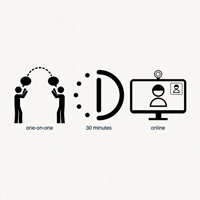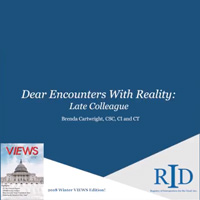All Articles
Common Fingerspelling Mistakes New Signers Make
One of the first concepts covered in beginning or basic sign language classes is fingerspelling. There are a few common mistakes that are made by many beginner signers related to fingerspelling. Hopefully you can recognize them in your own practice and avoid making bad habits that are difficult to break.
Signs That Are Close... But Not the Same - Set 7
This article is part of our “Signs That Are Close... But Not the Same” series, which highlights signs that look similar, but have different meanings. The signs discussed in this article include (1) BRAIN vs. THINK, (2) COLOR vs. FRIENDLY, (3) OH I SEE vs. YELLOW, (4) HISTORY vs. HARD OF HEARING, and (5) FANCY vs. FINE.
Savvy Tutoring and Savvy Chats: So Much to Sign About, So Much to Learn
We first started our Savvy Chat service over a year ago and have since added Savvy Tutoring. These ASL sessions let you meet online, one-on-one with one of our signing experts, Marta Belsky, through video chat. In that time, Marta has had the pleasure of meeting with people from around the country to chat and practice ASL skills, as well as for tutoring on vocabulary development, receptive and expressive fingerspelling skills, and more...
one-on-one
30 minutes
online
Each session is unique to meet the needs of ...
Interpreter Q & A: Should interpreters share stories about their day (and their clients)?
This Interpreter Q & A asks: My neighbor is an interpreter and she was telling me about all the gory things she has to face on a daily basis as an interpreter: feces, fungus, blood, naked bodies, nasty smells, foul language etc... No names of clients were disclosed but I couldn’t help but wonder how Deaf people would feel if they knew that she was talking and laughing about them. I remember when I was in the hospital, I was so sick I puked. I’m sure my poop stunk. I’m sure I looked like crap. I hope my nurses didn’t talk about me. I think the same should apply to interpreters. What is your opinion about this?
This article is part of our "Dear BC, Interpreter Q & A” series, which answers questions on interpreting and Deaf culture from multiple perspectives. This article was also published in the Spring 2018 (Issue 35 Volume 2) Edition of VIEWS Magazine from RID.
Raising Deaf Children From a Foreign Land
The DNA heredity companies are very popular right now. Every time you turn on the television you see a new touching commercial of how people’s lives have been changed. While watching a recent commercial, there was a woman who, all her life, thought she was primarily from one genetic background and her ancestors came from one place and lived her life accordingly. However, after getting the results of her DNA test, she realized her ancestry really was from a totally ...
Interpreter Q & A: What to do when your team interpreter has an unexcused (and provocative) absence?
This article is part of our "Dear BC, Interpreter Q & A” series, which answers questions on interpreting and Deaf culture from multiple perspectives. This article was also published in the Winter 2018 Edition of VIEWS Magazine (page 28-29) from RID. VIEWS is a digital publication distributed quarterly by the Registry of Interpreters for the Deaf (RID) and dedicated to the interpreting profession. The magazine includes RID member spotlights, announcements from the RID board, and engaging stories about issues impacting the ...
Living Loud: Ella Mae Lentz - Poet, Educator, and Advocate
Ella Mae Lentz is a Poet, Educator, and Advocate. Read the article to learn more about the life and accomplishments of this amazing Deaf woman.
Interpreter Q & A: Why do ITP students date Deaf people while they are in the program?
This Interpreter Q & A asks: A recent phenomenon I have noticed is a growing tendency for ITP students to date Deaf people while they are in the program. What is behind this?
This article is part of our "Dear BC, Interpreter Q & A” series, which answers questions on interpreting and Deaf culture from multiple perspectives. This article was also published in the Fall 2017 Edition of VIEWS Magazine from RID.
5 Cool New Features in the Updated Signing Savvy Member App
We did a complete rewrite to our Signing Savvy Member App this Fall for both Apple iOS and Android mobile devices. Since then, we have continued to release updates to the app to add more features and make tweaks based on feedback from our savvy members. The current version of the app, as of the date of this article, is version 2.4. The new app is 64-bit compatible (required for iOS 11), now supports the iPhone X display, and includes several new features. ...
Teaching Language Through Play: Lessons Learned While Playing Restaurant and Getting Started with Introducing Food
Kids naturally learn while they are playing. Introducing activities that allow them to learn through play lets them explore their curiosity, have new experiences, and better connect and retain what they have learned.
Lessons Learned While Playing "Restaurant"
One great example of a learning through play activity is setting up an area to play “restaurant” in the classroom (or at home). Playing restaurant is a very successful way to cover several areas all at the same time – vocabulary, health and nutrition, ...
ADVERTISEMENTS


















